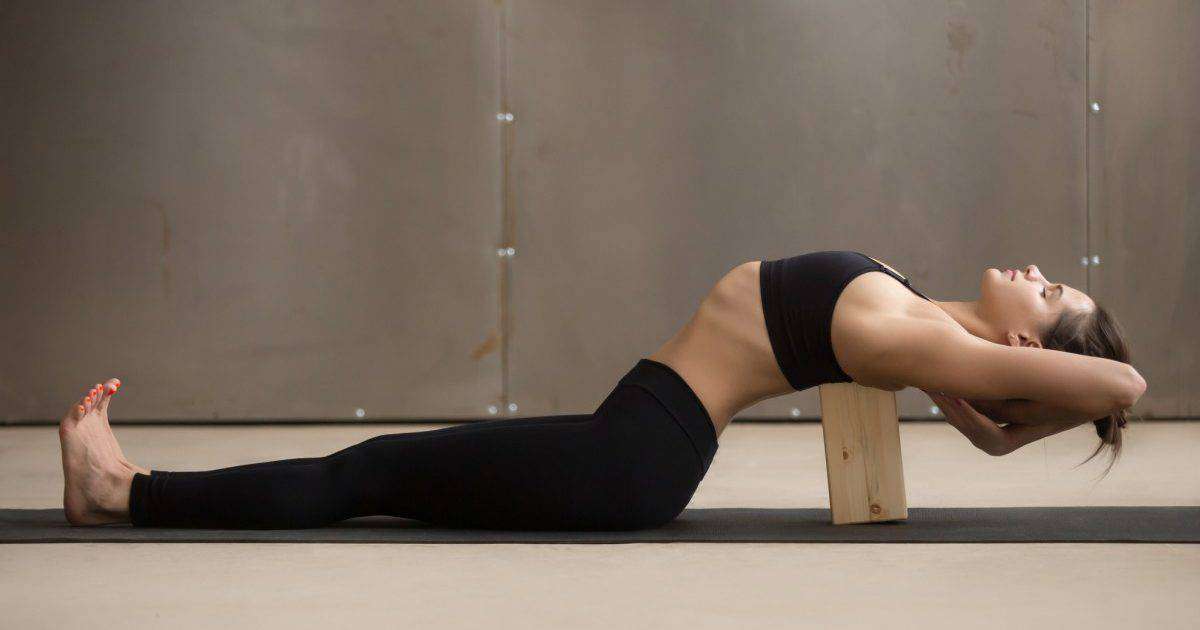When starting your journey into yoga, one of the key tools to assist you in your practice is a yoga block. But how many yoga blocks do you really need as a beginner? This article will provide you with insights to help you determine the essential number of blocks for your sessions. Whether you are looking to improve your flexibility, balance, or stability, finding the right number of yoga blocks will enhance your practice and help you achieve your goals. So, let’s explore the importance of yoga blocks and discover how they can support you on your yoga journey.
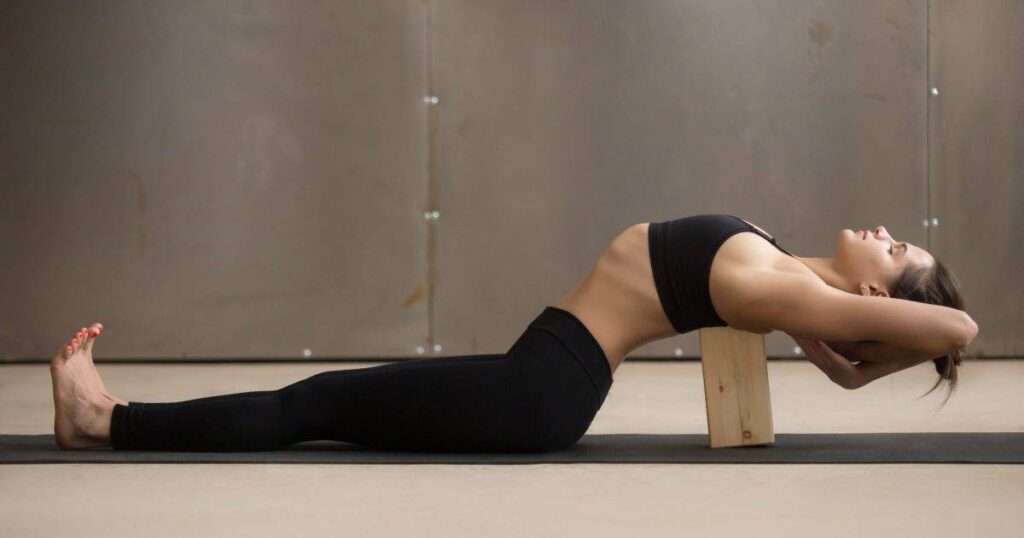
Determining the Number of Yoga Blocks
Yoga blocks are a versatile and essential prop used in yoga practice to provide support, aid in alignment, and enhance flexibility. Determining the number of yoga blocks you need depends on various factors, including the purpose of the blocks, the poses you plan to practice, and your individual flexibility and comfort level. By understanding the benefits of using yoga blocks, choosing the right blocks for your needs, and considering the recommended number of blocks for beginners, you can enhance your yoga practice and personalize it to fit your unique requirements.
Understanding the Purpose of Yoga Blocks
Before delving into how many yoga blocks you need, it’s crucial to understand the purpose they serve in a yoga practice. Yoga blocks are primarily used to provide support and stability in poses where your hands cannot comfortably reach the floor or when you need additional lift or extension. They assist in achieving correct alignment, increase stability and balance, facilitate deeper stretches, and reduce strain and the risk of injury. By using yoga blocks, you can modify poses to suit your body’s capabilities and gradually progress toward more advanced postures.
Identifying the Different Yoga Poses Requiring Blocks
To determine the number of yoga blocks you need, it is essential to identify the yoga poses that commonly utilize blocks. Some of the key poses where blocks are commonly employed include the Supported Bridge Pose, Standing Forward Bend, Extended Triangle Pose, Supported Half Moon Pose, Modified Downward-Facing Dog, Supported Fish Pose, and Seated Forward Bend. These poses often require additional support, extension, or modification, making blocks an invaluable tool to enhance your practice.
Considering Individual Flexibility and Comfort Level
When determining the number of yoga blocks needed, it is vital to consider your individual flexibility and comfort level. If you are a beginner or have limited flexibility, you may benefit from using more blocks to provide adequate support and stability. As your flexibility and comfort level improve over time, you can gradually reduce the number of blocks or even eliminate them altogether. It’s important to listen to your body’s needs and make adjustments accordingly to ensure a safe and enjoyable practice.
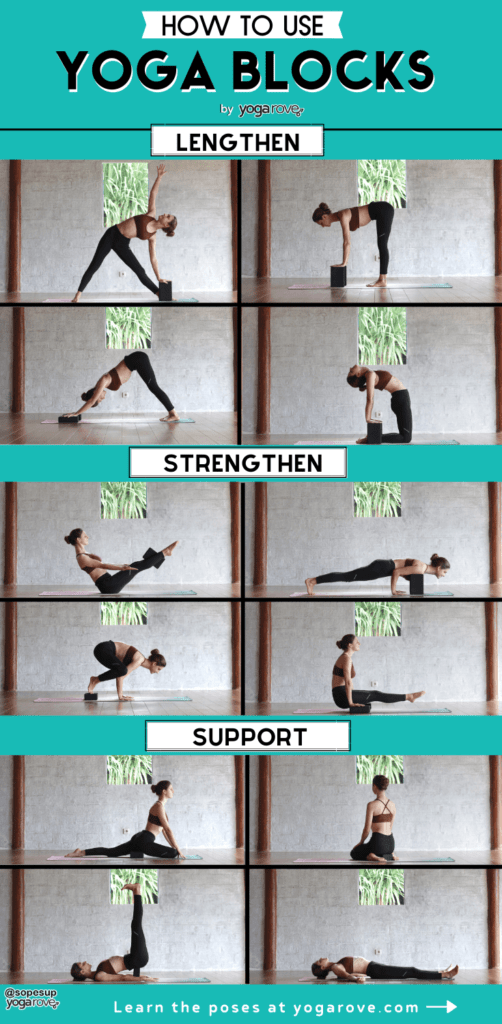
Benefits of Using Yoga Blocks
Using yoga blocks can offer various benefits that enhance your yoga practice and support your alignment, stability, and overall well-being.
Assistance in Achieving Correct Alignment
One of the key advantages of using yoga blocks is that they assist in achieving correct alignment in poses. By placing blocks strategically under your hands, feet, or hips, you can adapt poses to suit your body’s natural alignment. This is especially beneficial for beginners who are still developing their strength and flexibility, as well as individuals with limited mobility or injuries.
Increased Stability and Balance
Yoga blocks provide an added level of stability and balance in your practice. By using blocks as an extension of the floor, you can create a solid foundation to support your body. This additional stability allows you to explore poses that may otherwise be challenging or unattainable, helping to build confidence and improve your overall balance.
Deeper Stretches and Extended Reach
Yoga blocks are instrumental in facilitating deeper stretches and extending your reach in various poses. By placing them under your hands, you can enhance your forward folds, allowing you to reach the floor or your feet with greater ease. Similarly, using blocks under your hips can elevate your pelvis, enabling a deeper opening in seated poses such as the Seated Forward Bend.
Reduced Strain and Injury Prevention
Another significant benefit of using yoga blocks is the reduction of strain and the prevention of injuries. Blocks provide additional support, allowing you to maintain proper alignment and avoid overstretching or straining your muscles. This is particularly important for individuals with physical limitations, injuries, or conditions that require modifications during their practice.
Choosing the Right Yoga Blocks
To ensure maximum comfort and effectiveness in your practice, it is crucial to choose the right yoga blocks that align with your individual needs and preferences.
Different Types of Yoga Blocks Available
There are various types of yoga blocks available in the market, each offering distinct features and benefits. The most common types of yoga blocks include foam blocks, cork blocks, and bamboo blocks. Foam blocks are lightweight and affordable, making them a popular choice for beginners. Cork blocks are firm and provide excellent stability, while bamboo blocks are environmentally friendly and highly durable.
Evaluating the Materials and Density
When selecting yoga blocks, it is important to evaluate the materials used and their density. Foam blocks are typically softer and more forgiving, making them suitable for individuals who prefer a gentler support. Cork blocks, on the other hand, offer a sturdier base that can withstand more weight and pressure. Consider your comfort level, the level of support you require, and any specific material preferences when choosing your yoga blocks.
Taking into Account Personal Preference and Needs
Personal preference and needs play a crucial role in choosing the right yoga blocks. Consider factors such as size, weight, and texture that would contribute to your overall comfort and enjoyment during your practice. Some individuals may prefer larger blocks for increased stability, while others may opt for smaller, more portable blocks for convenience. It is important to select blocks that align with your preferences and support your unique body type and practice style.
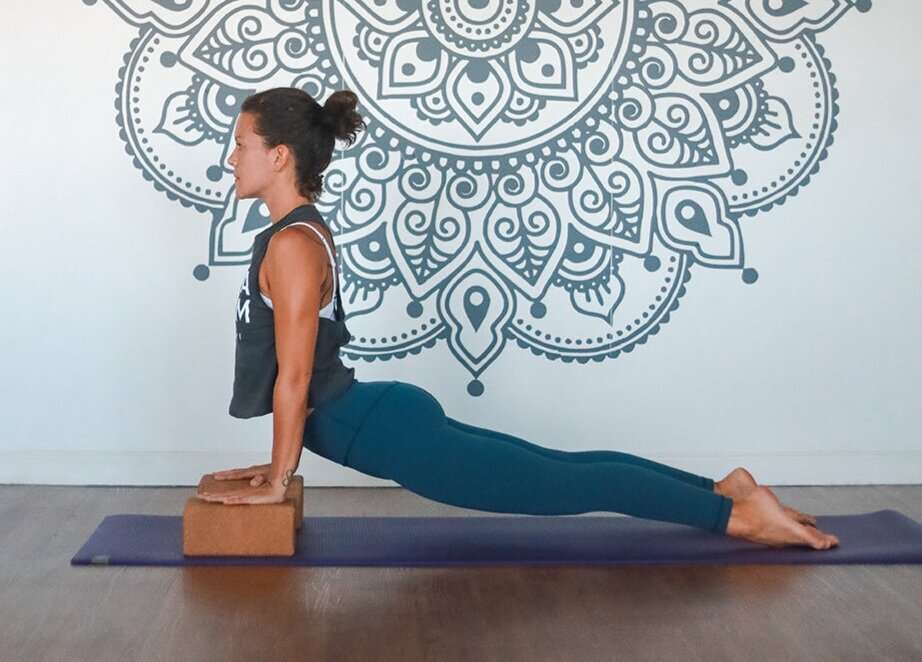
Standard Yoga Block Size
Standard yoga blocks generally have dimensions of 9 inches by 6 inches by 4 inches. This size is suitable for most yoga practitioners, providing adequate support and stability in a wide range of poses. However, it is essential to note that there may be variations in block sizes, especially if you opt for different materials or brands. It is always advised to refer to the specific dimensions provided by the manufacturer when purchasing a yoga block.
Suitability for Most Yoga Practitioners
With its standard size, yoga blocks are designed to be suitable for most yoga practitioners, including beginners and those with varying levels of flexibility. The 9-inch width allows for a sufficient surface area to support various body parts, while the 4-inch height offers ample lift without compromising stability. These dimensions strike a balance between versatility and functionality that caters to the needs of a broad range of individuals.
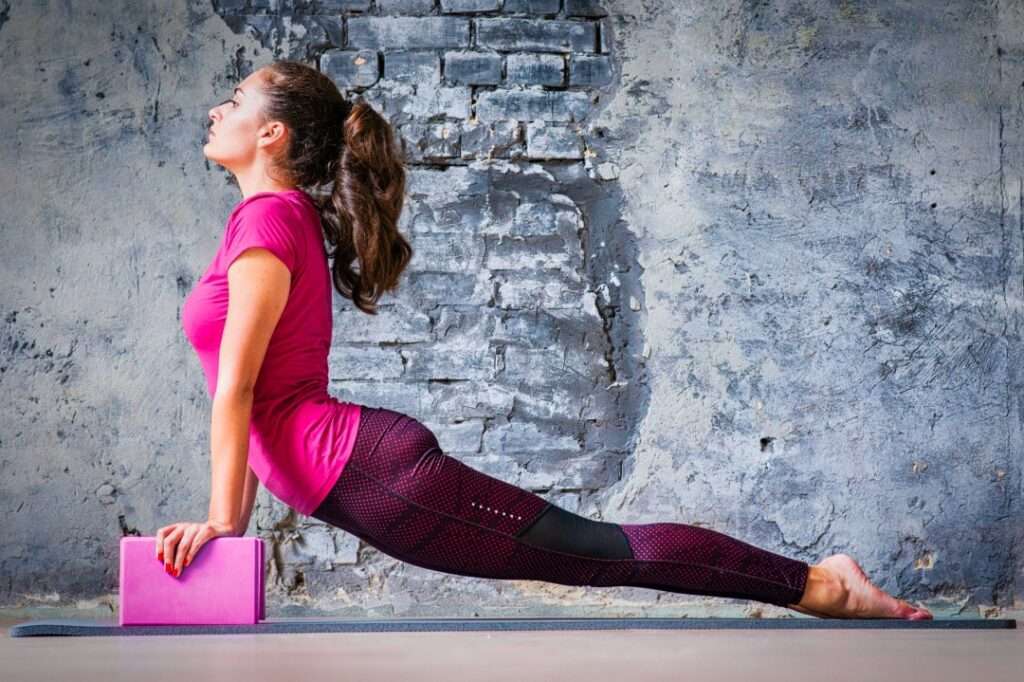
Considering Variations for Specific Poses
While a standard yoga block size is suitable for most practitioners, certain poses may benefit from variations in block height or size. For example, poses that involve a deeper stretch or require additional support, such as the Supported Fish Pose or the Extended Triangle Pose, may necessitate the use of two blocks or even a larger block to provide the desired effect. It is always important to listen to your body and make adjustments as needed to enhance your practice.
Recommended Number of Blocks for Beginners
As a beginner, it is advisable to start with one yoga block to provide support and aid in modifications. This initial block will assist in achieving proper alignment, enhancing stability, and preventing strain or injury. By beginning with one block, you can gradually build strength and flexibility while familiarizing yourself with its usage.
Advantages of Having Two Blocks
While starting with one block is recommended for beginners, there are distinct advantages to having two blocks. Two blocks provide additional support and stability, allowing for deeper modifications and variations in poses. This can be particularly beneficial for individuals with limited flexibility or those working on advancing their practice. Using two blocks can also help develop symmetrical strength and balance on both sides of the body.
Gradually Increasing the Number of Blocks
As your practice evolves and your flexibility improves, you can consider gradually increasing the number of blocks you use. This can further assist in achieving correct alignment, deepening your stretches, and exploring more advanced poses. However, it is important to progress slowly and listen to your body’s needs. Adding blocks should be done thoughtfully and gradually, allowing for a gradual adaptation rather than rushing into using multiple blocks.
Listening to the Body’s Needs and Adjusting Accordingly
Above all, it is essential to listen to your body’s needs and make adjustments accordingly. Everyone’s yoga journey is unique, and what works for one person may not work for another. Pay attention to how your body responds to the use of blocks, and make modifications as necessary. As you progress in your practice and become more in tune with your body, you will gain the insight to adjust the number of blocks to suit your individual needs.
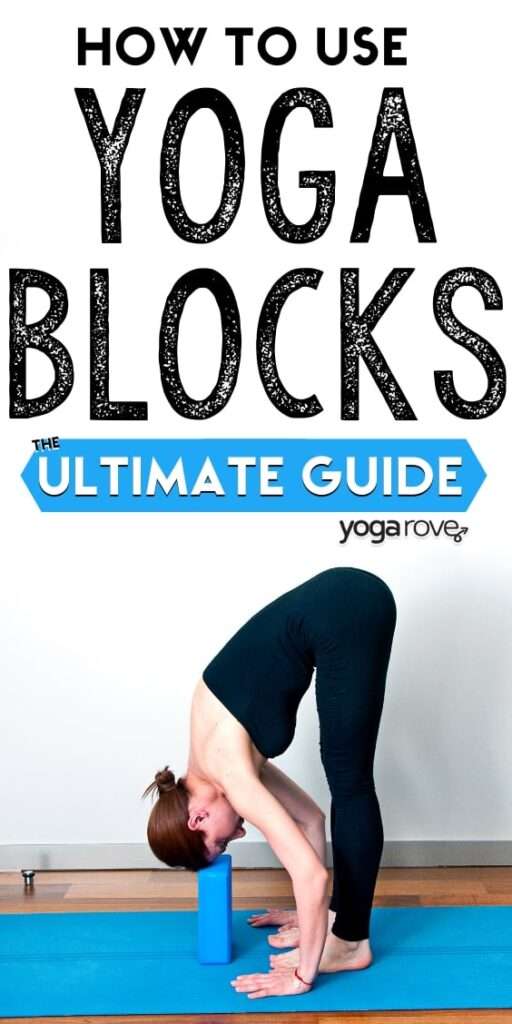
Yoga Block Placement and Usage Tips
Proper placement and usage of yoga blocks are crucial in maximizing their benefits and enhancing your practice. Here are some tips on how to use blocks effectively:
Placing Block(s) to Support Body Parts or Enhance Stability
When using blocks to support body parts, such as the hands, feet, or hips, it is important to place them strategically to provide the necessary support and alignment. For example, in poses like the Supported Bridge Pose or the Standing Forward Bend, you can place blocks under your hands to bring the ground closer to you and provide a stable foundation. In poses like the Extended Triangle Pose, blocks can be used to bring the floor higher, allowing you to comfortably reach your hand down.
Using Blocks for Modifications and Adaptations
Blocks can be invaluable tools for modifications and adaptations in your practice, especially if you have limitations or injuries. They can assist you in accessing poses that may be challenging due to flexibility or strength constraints. For example, in the Modified Downward-Facing Dog, placing blocks under your hands can reduce strain on the wrists and shoulders. Using blocks to modify poses ensures that you can practice safely and avoid exacerbating any existing injuries or restrictions.
Experimenting with Block Positions to Personalize Practice
Every individual’s body is unique, and what works for one person may not work for another. Therefore, it is important to experiment with block positions and find what works best for you. Be curious and explore different ways to use blocks in poses, adjusting their placement and height to suit your comfort and alignment goals. Yoga is a practice of self-discovery, and by personalizing your practice with block variations, you can create a more fulfilling and rewarding experience.
Common Yoga Poses Utilizing Blocks
Several common yoga poses can benefit from the use of blocks, providing support, stability, and deeper variations. Here are some poses where blocks are commonly utilized:
Supported Bridge Pose
The Supported Bridge Pose is a gentle backbend that can be enhanced with the use of blocks. Place blocks under your sacrum or lower back to support your spine and allow for a deeper opening in the chest and shoulders.
Standing Forward Bend
In the Standing Forward Bend, blocks can be placed in front of your feet to bring the ground closer. This modification is especially useful for beginners or individuals with limited flexibility, allowing them to maintain proper alignment and lengthen the spine.
Extended Triangle Pose
The Extended Triangle Pose often requires a wide reach and a strong foundation. By placing a block on the ground next to your front foot, you can stabilize your hand, support your balance, and align your torso more comfortably.
Supported Half Moon Pose
The Supported Half Moon Pose involves balancing on one leg while reaching one arm toward the sky. Using blocks under the bottom hand provides additional support for balance and stability, allowing you to focus on the extension and opening of the upper body.
Modified Downward-Facing Dog
In the Modified Downward-Facing Dog, placing blocks under your hands can alleviate pressure and strain on the wrists, making it a valuable modification for individuals with wrist injuries or limitations.
Supported Fish Pose
The Supported Fish Pose can be enhanced with the use of blocks placed under the upper back and shoulder blades. This modification enhances the heart opening and gently stretches the chest and shoulders.
Seated Forward Bend
In the Seated Forward Bend, blocks can be used to support the forehead or chest, making the pose more accessible and comfortable for those with limited flexibility. Blocks also allow for a gentle release in the hamstrings and lower back.
Understanding Progression and Advancement
Yoga practice is a journey of progression and advancement, and the use of yoga blocks should gradually diminish over time. As you build strength, flexibility, and body awareness, you can work towards practicing without blocks. This progression allows you to deepen your practice and challenge yourself to explore more advanced poses.
Gradually Reducing Reliance on Blocks
As your practice evolves, aim to gradually reduce your reliance on blocks. Begin by experimenting with using fewer blocks or using them at low heights. Over time, you can challenge yourself to practice certain poses without any blocks, relying solely on your body’s abilities. This gradual reduction in reliance fosters growth and self-confidence in your practice.
Building Strength and Flexibility
The use of yoga blocks should never replace the effort to build strength and flexibility. Instead, they serve as tools to support and guide you in your development. Focus on cultivating strength and flexibility by working on foundational poses and gradually building up to more advanced postures. With consistent practice, you will notice improvements that will allow you to rely less on blocks and explore the full potential of your body.
Working towards Practicing without Blocks
While blocks are beneficial in supporting your yoga practice, the ultimate goal is to practice without them. As you progress and your body becomes more accustomed to poses, aim to challenge yourself by experimenting with practicing without blocks. This may require a greater focus on proper alignment, engaging core muscles for stability, and a deeper understanding of your body’s capabilities.
Exploring More Challenging Poses with the Guidance of a Yoga Instructor
As you grow more comfortable without the use of blocks, you may feel ready to explore more challenging poses. At this stage, it is advisable to seek the guidance of a qualified yoga instructor who can provide proper alignment cues and ensure your safety. With the support and expertise of an instructor, you can confidently navigate advanced poses, refine your technique, and continue to progress in your yoga journey.
Special Considerations for Injuries or Limitations
Individuals with injuries or physical limitations may require special considerations when using yoga blocks. It is crucial to prioritize your safety and consult with a healthcare professional or yoga therapist before incorporating blocks into your practice.
Consulting a Healthcare Professional or Yoga Therapist
If you have a pre-existing injury, chronic condition, or physical limitation, it is recommended to consult with a healthcare professional or an experienced yoga therapist before using yoga blocks. They can provide personalized guidance and recommendations tailored to your specific needs, ensuring that the use of blocks aligns with your healing process.
Using Blocks to Accommodate Physical Restrictions
Yoga blocks can be invaluable tools to accommodate physical restrictions. If you have limited range of motion or mobility in certain joints, using blocks can modify poses and provide the necessary support to ensure safe and comfortable practice.
Modifying Poses to Ensure Safety and Prevent Exacerbating Injuries
Modifying poses is essential to ensure the safety and prevent the exacerbation of existing injuries. Blocks can be used to adapt poses and minimize strain on vulnerable areas. By working with a qualified yoga teacher or therapist, you can explore modified poses that suit your needs and facilitate healing while avoiding further injury.
Personalizing Your Yoga Practice
Ultimately, personalizing your yoga practice is key to a fulfilling and enjoyable experience. By incorporating yoga blocks into your practice and adapting them to your unique needs, you can enhance comfort, alignment, and overall enjoyment.
Experimenting with Different Block Placements
Don’t be afraid to experiment with different block placements to find what works best for you. Move blocks higher, lower, or sideways to accommodate your body’s specific requirements. Remember that yoga is a practice of self-discovery, and by exploring different variations, you can create a practice that is truly personalized.
Listening to the Body’s Feedback
One of the most important things to remember when using yoga blocks is to listen to your body’s feedback. Pay attention to how your body responds to the use of blocks and make adjustments accordingly. If something doesn’t feel right or causes discomfort, modify the block placement or consider using fewer blocks. Your body knows best, and by listening to its cues, you can create a practice that feels nourishing and supportive.
Adjusting the Number of Blocks over Time
As your practice evolves, you may find that your reliance on yoga blocks changes. Pay attention to your progress and make adjustments in the number of blocks you use accordingly. Gradually reducing the number of blocks or practicing without them altogether can help you develop a deeper sense of body awareness and explore your fullest potential.
Emphasizing Comfort and Enjoyment in the Practice
Above all, remember to prioritize comfort and enjoyment in your yoga practice. Yoga should be a practice that brings joy and rejuvenation to your life. Whether you use one block or multiple blocks, ensure that your practice feels good and supports your overall well-being. Emphasize self-care and trust in your journey, and let the use of yoga blocks enhance your practice in a way that feels authentic to you.
In conclusion, determining the number of yoga blocks you need requires careful consideration of the purpose, poses, and individual factors influencing your practice. By understanding the benefits of using yoga blocks, choosing the right blocks for your needs, and gradually adapting the number of blocks as you progress, you can enhance your yoga journey and create a personalized practice that supports your unique body and goals. Remember to prioritize safety, seek guidance when needed, and always listen to your body’s needs as you explore the world of yoga blocks. Happy practicing!
